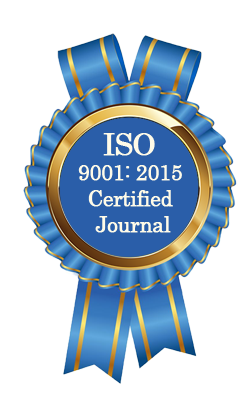| All | Since 2020 | |
| Citation | 105 | 60 |
| h-index | 4 | 4 |
| i10-index | 3 | 2 |
WJAHR Citation 
Login
News & Updation
Best Article Awards
World Journal of Advance Healthcare Research (WJAHR) is giving Best Article Award in every Issue for Best Article and Issue Certificate of Appreciation to the Authors to promote research activity of scholar.
Best Article of current issue
Download Article : Click here
Indexing
Abstract
SOCIO-DEMOGRAPHIC AND CLINICAL PROFILE OF PATIENTS WITH SCABIES IN MOSUL CITY
Sandra Mansour Butrus* and Omaya Fakhri Qassid Al-Harbawi
ABSTRACT
Background: Scabies is a neglected parasitic skin disease that forms a major health problem worldwide. Scabiesis embedded in a complex web of causation characterized by poor living conditions, overcrowding, poor personalhygiene and low education level. Aim of the study: To assess the socio-demographic and clinical profile ofscabies patients in Mosul City. Patients & Methods: A cross sectional study design has been adopted among 300scabies patients attending Dermatology Outpatient Clinic at Ibn-Sina Teaching Hospital and at Mosul GeneralHospital using a special questionnaire form filled by information taken by the investigator from the participantsthrough a direct interview. Data collection started on the 2nd of January 2024 and ended on the 30th of June 2024.Results: The total number of patients were 300 patients, Males were more than females 53.3% versus 46.7% withthe age group 15-44 years being the highest one including 41.4% of respondents and 52% lived in urban areas.41.4% of the respondents were married. More than third of patients 39.7% had primary education while 44.3% ofstudy sample were illiterate including the below 5 years age group patients and 72% belonged to the fifth socialclass (unskilled). Among the respondents, 49% lived in highly crowded houses, 25.3% lived in good housingconditions and 51% had poor personal hygiene. Family history for scabies was positive in 78% of patients andmore than half of the patients 54.3% with unknown source of infection at time of study and examination of otherfamily members. History of reinfection was present in 28.3% of total sample size, other dermatological problemsin addition to scabies at time of study and examination was present about 9.3% of total patients and mainly wasatopic and contact dermatitis. The most common site for clinical presentation of scabies (i.e. rash and itching) wasthe abdomen 49.3% followed by the hands 47%. More than half of study sample scabies skin lesion types wereexcoriated papules 52.3% while the second most common scabies skin lesion type was erythematous papulesdemonstrate 39%. Conclusion: The age group 15-44 years being the highest affected age group more than third oftotal study sample. More than third of patients had primary education while nearly less than half of study samplewere illiterate including the below 5 years age group patients. Family history for scabies was positive in most ofpatients. The most common site for clinical presentation of scabies (i.e. rash and itching) was the abdomenapproximately half of total study sample followed by the hands. More than half of study sample scabies skinlesion types were excoriated papules.
[Full Text Article] [Download Certificate]
